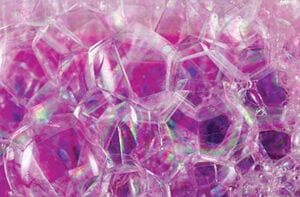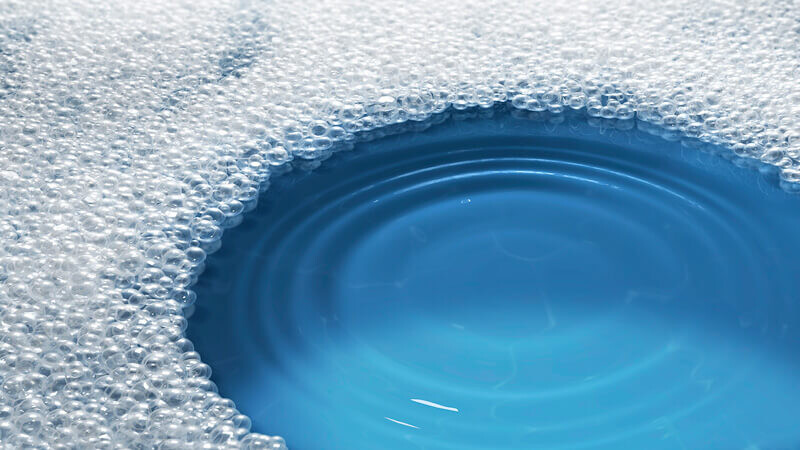The Duty of Defoamers in Enhancing Product Top Quality and Efficiency
In various making processes, the existence of foam can substantially hinder item high quality and operational effectiveness. Defoamers act as crucial additives that mitigate this problem, guaranteeing smoother manufacturing process while enhancing the visual and functional attributes of the final products (defoamers). Their application extends a wide range of sectors, from food and beverage to drugs, where consistency and dependability are paramount. Nevertheless, the selection of the suitable defoamer can be essential to accomplishing optimum results, increasing vital questions regarding formula compatibility and efficiency metrics that merit more exploration.
Recognizing Defoamers
Recognizing the role of defoamers is important for preserving item top quality across different markets. Defoamers are chemical ingredients made to protect against the formation and reduce of foam in liquid systems, which can negatively affect processes such as mixing, filling, and surface stress. Frothing can bring about inadequacies, product problems, and jeopardized visual charm, making defoamers an important part in producing operations.
In industrial applications, defoamers assist to boost item uniformity and stability. In the paint and finishes market, foam can conflict with the application process and the last finish. Similarly, in food and beverage production, extreme foam can impede bottling and packaging effectiveness (defoamers). The efficient usage of defoamers not just makes certain smoother manufacturing procedures however additionally adds to remarkable item performance.
In addition, the choice and solution of a defoamer need to straighten with particular application needs, such as compatibility with other active ingredients, effectiveness under differing temperature level and pH conditions, and prospective regulatory restrictions. Inevitably, understanding defoamers' functions and their relevance in various formulas is essential for enhancing manufacturing and guaranteeing the best output.
Sorts Of Defoamers
Defoamers can be classified into numerous kinds based upon their composition and system of activity. The key types include silicone-based, non-silicone organic, and inorganic defoamers.
Silicone-based defoamers are amongst one of the most reliable, mainly because of their capability to spread out promptly on the liquid surface and disrupt foam formation. Their special chemical framework permits superior stability, making them suitable for high-temperature applications and environments with varying pH levels.
Non-silicone organic defoamers, commonly made up of fatty acids or all-natural oils, are valued for their biodegradability and reduced poisoning. These are normally made use of in food and drink applications where safety and security and ecological influence are extremely important.
Not natural defoamers, which consist of materials like talc or calcium carbonate, act by raising the thickness of the fluid, consequently minimizing foam security. They are usually utilized in commercial procedures where compatibility with various other products is not an issue.
Each kind of defoamer has distinct advantages and constraints, permitting for customized services depending on the specific frothing concerns come across in different applications. Comprehending these differences is essential for optimizing efficiency and achieving wanted item high quality.
Applications Across Industries
Countless markets take advantage of defoamers to enhance item high quality and functional performance. In the food and drink market, defoamers are important in processes such as developing and dairy products manufacturing to stop foam formation, which can lead to inadequacies and product inconsistency. By managing foam, producers can make certain much better yield go to my site and a much more uniform item.
In the pharmaceutical industry, defoamers play a crucial role in the formulation of liquid medications, where extreme foam can impede blending and accurate dosing. Their usage helps keep the integrity of the solutions and helps with smoother manufacturing processes.
The paint and coatings sector also depends on defoamers to improve the efficiency of items during application. By minimizing foam, these ingredients ensure a smoother coating This Site and enhance the visual qualities of the end product.

Advantages of Using Defoamers
While the application of defoamers varies across sectors, their benefits constantly boost item top quality and procedure effectiveness. One considerable advantage is the reduction of foam development throughout producing processes, which can or else result in manufacturing hold-ups and inconsistencies in item quality. By lessening foam, defoamers allow a smoother flow of materials, facilitating more reliable operations and decreasing the likelihood of tools breakdowns.
Furthermore, making use of defoamers can enhance the appearance and texture of last items. In industries such as finishings, paints, and food processing, too much foam can jeopardize the visual appearances and general high quality, while the appropriate defoamer application makes certain an uniform coating and preferable characteristics. Defoamers can contribute to cost savings by reducing waste during manufacturing and optimizing the use of raw products.

Choosing the Right Defoamer
Selecting the right defoamer is crucial for enhancing production procedures and making certain item top quality. The selection of defoamer affects not just the effectiveness of foam control but additionally the total efficiency attributes of the end product. Elements to consider include the kind of application, the chemistry of the formula, and the environmental conditions under which the product will certainly be utilized.
Different industries might need particular defoamer types, such as silicone-based, natural, or polymeric defoamers. Recognizing the compatibility of the defoamer with the main ingredients is vital to avoid damaging reactions that could endanger product integrity. In addition, the defoamer's efficiency in various you can try this out temperature levels and pH degrees must be reviewed to make sure constant efficiency.
Checking the defoamer in small-scale applications can supply valuable understandings into its performance and viability. Consideration of regulative conformity, particularly in food, drugs, and cosmetics, is paramount in choosing a defoamer. Inevitably, a complete assessment of these elements will certainly lead to the choice of a defoamer that not just controls foam successfully yet also enhances the high quality and performance of the last item.
Conclusion

Finally, defoamers are necessary ingredients that considerably enhance product high quality and efficiency throughout different industries. By effectively lowering foam development, these agents not only improve operational effectiveness however additionally add to the functional and visual integrity of items. The strategic selection and application of defoamers lead to cost savings, optimized resource usage, and raised consumer satisfaction. Overall, the importance of defoamers in industrial procedures can not be overemphasized, as they play an essential duty in attaining constant and top notch results.
Lathering can lead to inefficiencies, item flaws, and jeopardized aesthetic allure, making defoamers an essential element in manufacturing procedures.
